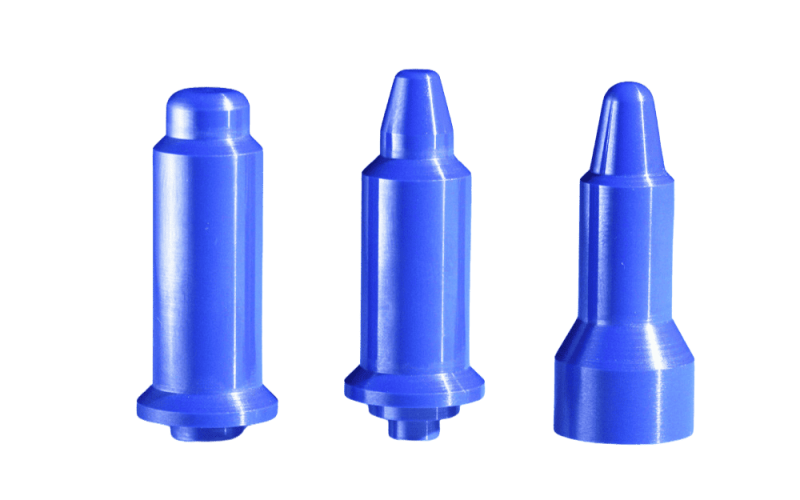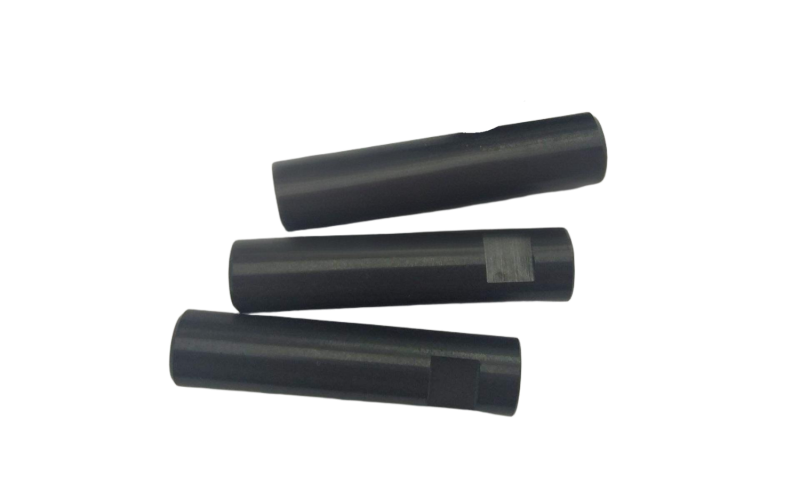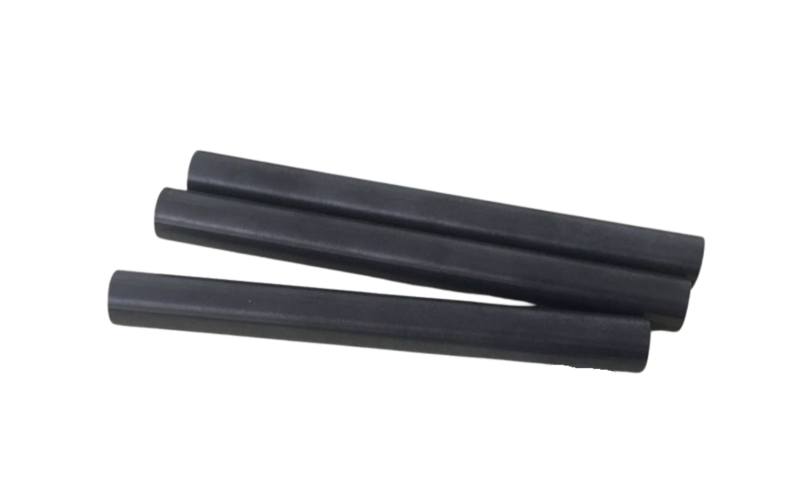Imagine materials so strong they can survive a spaceship’s fiery journey or so tough they fix your teeth! That’s what engineering ceramics are all about. These are super-special materials made for tough jobs in places like aerospace, cars, and even your phone. Unlike the ceramics used for cups or plates, engineering ceramics are built to be extra strong, handle crazy heat, and last a super long time. At Eshino Precision, we’re excited to share how these amazing materials are changing the world. First, here’s a quick table to show you the coolest stuff about engineering ceramics!
| What They Are | Key Features | Where They’re Used |
|---|---|---|
| Super-strong materials | Strong, heat-resistant, durable | Spaceships, phones, cars |
What Are Engineering Ceramics?
Superheroes of Materials
So, what exactly are engineering ceramics? Well, they’re not like the clay pots you might make in art class. Instead, these are advanced materials designed to do really hard jobs. For example, they can stay strong in super-hot places or keep working when other stuff would break. Next, they’re made from special ingredients like oxides and nitrides, which sound fancy but just mean they’re tough and pure. Because of this, engineering ceramics are perfect for high-tech things like planes and gadgets.
Why They Matter
Now, you might wonder why these ceramics are such a big deal. First, they help make things we use every day—like your phone or car—work better. Also, they’re used in big industries like aerospace and medicine. For instance, they can be part of a spaceship’s heat shield or even a fake tooth! At Eshino Precision, we love how versatile they are. Plus, an expert named Dr. Jane Smith, who works with ceramics at a big tech company, says, “Engineering ceramics are the backbone of modern technology because they handle heat and stress like nothing else.” Pretty cool, right?
How They’re Different
Finally, engineering ceramics are different from regular ceramics because they’re made super carefully. While a plate might crack if you drop it, these ceramics are built to last. They’re also called technical or advanced ceramics, which just means they’re extra special. So, whether it’s for electronics or cars, engineering ceramics are the real MVPs!
Types of Engineering Ceramics
Meet the Team
Next up, let’s talk about the different types of engineering ceramics. Think of them like a team of superheroes, each with its own power! First, there’s alumina. It’s awesome at blocking electricity, so it’s used in gadgets like phones. You can learn more about it on our alumina ceramics page. Then, there’s zirconia. This one’s super tough and shows up in things like fake teeth—check out our zirconia guide!
More Cool Types
Also, we’ve got silicon nitride. It’s strong and can handle heat, making it perfect for tools and car parts. Visit our silicon nitride page for details. Another star is silicon carbide. It’s hard and moves heat well, so it’s used in armor and spaceship parts—see our silicon carbide blog. Each type is like a special tool in a toolbox!
Even More Options
Finally, there are others like boron carbide, tungsten carbide, aluminium nitride, and boron nitride. For example, boron carbide is super hard and light, great for armor. Meanwhile, aluminium nitride helps cool electronics. At Eshino Precision, we use these types to make things like high-strength ceramic rods. So, no matter the job, there’s an engineering ceramic ready to help!
Amazing Properties of Engineering Ceramics
Super Strong and Tough
Now, let’s dive into why engineering ceramics are so awesome. First, they’re super strong. For example, silicon nitride can hold up to 210 MPa—that’s stronger than some steel! Also, they’re really hard, so they don’t wear out fast. Check out our high-strength page to see why this matters. Because of this, they’re perfect for tough jobs!
Heat and Rust Fighters
Next, these ceramics can take crazy heat. For instance, alumina doesn’t melt until 2050°C—hotter than a volcano! Plus, they don’t rust or break down in nasty chemicals. That’s why we talk about their high-temperature resistance and corrosion resistance on our site. So, they stay strong no matter what!
Special Powers
Also, engineering ceramics have cool tricks. Some, like alumina, block electricity, which is great for electronics. Others, like zirconia, can conduct electricity when hot, helping sensors work. Plus, they’re safe for your body, so they’re used in things like dental implants. Learn more on our properties page. Basically, they’re like magic materials!
Where Are Engineering Ceramics Used?
Up in the Sky
First, let’s see where engineering ceramics show up in our world. They’re superstars in aerospace! For example, silicon carbide helps make turbine blades and heat shields for spaceships. These parts need to handle crazy heat without melting. So, when a spaceship comes back to Earth, ceramics keep it safe. At Eshino Precision, we make rods that help with this!
In Your Car and Phone
Next, engineering ceramics are in stuff you use every day, like cars and phones. In cars, alumina keeps spark plugs working in hot engines. Also, silicon nitride makes brakes and sensors tough. Meanwhile, in electronics, ceramics like aluminium nitride keep your phone cool so it doesn’t overheat. Pretty neat, huh?
Helping People and Power
Also, these ceramics help in medicine and energy. For instance, zirconia makes fake teeth and hip replacements strong and safe—check our zirconia guide. Then, in energy, silicon carbide boosts solar cells to make clean power. Plus, in defense, boron carbide makes light armor for soldiers. Engineering ceramics are everywhere!
How Are Engineering Ceramics Made?
Starting with Powder
Now, how do we make engineering ceramics? First, it starts with tiny powders, like super-fine flour. These powders are made from special stuff like oxides or nitrides. We mix them carefully to get them just right. Because they’re so small—sometimes smaller than a grain of sand—they stick together well. At Eshino Precision, we use these powders to create awesome things!
Shaping and Baking
Next, we shape the powder into cool forms, like rods or plates. We might press it, squeeze it, or mold it—like playing with clay! Then, we bake it at really high heat, between 1000°C and 2000°C. This step, called sintering, makes the ceramic super strong. It’s like baking a cake, but way hotter! After that, it’s tough enough for jobs like industrial rods.
Finishing Touches
Finally, we polish the ceramics with special tools, like diamond ones, because they’re so hard. Sometimes, we add a coating to make them even better, especially for things like medical parts. This careful process is why engineering ceramics are so amazing. Want to know more about how they work? Check our properties page!
The Growing Market for Engineering Ceramics
A Big Deal in 2025
Now, let’s talk money! In 2025, the market for engineering ceramics is huge—about $120 billion! That’s like a giant pile of gold. Last year, in 2024, it was $115 billion, and it’s growing fast. Why? Because people love electric cars and fast 5G internet, and ceramics make those possible. At Eshino Precision, we’re part of this exciting growth!
Why It’s Growing
Next, the market keeps getting bigger because engineering ceramics are so useful. For example, they help with clean energy like solar power. Also, they’re key for 5G tech and electric cars. Experts say it’ll grow by 4.2% every year until 2030. That’s a lot of ceramics making the world better!
Where It’s Happening
Also, places like Asia-Pacific are leading the way. They make and use tons of ceramics because of all the factories there. Meanwhile, the whole ceramics market—not just the fancy engineering kind—was $160.67 billion in 2024 and could hit $295.26 billion by 2032. So, engineering ceramics are a big part of a giant industry. Want to see how we fit in? Visit our blog page!
Real-World Examples of Engineering Ceramics
Saving Spaceships
Finally, let’s look at some real stories of engineering ceramics in action. First, silicon carbide saves spaceships! It’s used in turbine blades and heat shields because it can handle super-hot temperatures. When a spaceship zooms back to Earth, this ceramic keeps it from burning up. Check out our aerospace blog for more!
Fixing Teeth and Cars
Next, zirconia makes your smile better. It’s in dental implants because it’s tough and safe for your body. Imagine getting a new tooth that lasts forever—cool, right? Also, alumina helps cars run smoothly by keeping spark plugs working in hot engines. We’ve got details on our alumina guide!
Spinning Strong
Also, silicon nitride is a hero in ball bearings. These little balls help machines spin without breaking, like in big factory tools. They’re strong and don’t wear out fast, which is why we use them at Eshino Precision. These examples show how engineering ceramics make life awesome every day!
The Future of Engineering Ceramics
Flying to Mars
First, let’s look at what’s next for engineering ceramics. Soon, they could help us fly to Mars! Special ceramics called ultra-high temperature ceramics (UHTCs) can handle heat over 2000°C. So, they’re perfect for super-fast planes or spaceships. At Eshino Precision, we’re excited about these future adventures. Imagine zooming through space with ceramics keeping you safe!
3D Printing and Tiny Tech
Next, engineering ceramics are getting cooler with 3D printing. This means we can make them into any shape, like custom parts for your body or machines. Also, tiny ceramics—called nanoceramics—are coming. They’re so small they make gadgets and sensors even better. Check out our 3D printing page to see how this works. It’s like magic for the future!
Better Bodies and Energy
Also, the future includes ceramics fixing people and powering the planet. For example, new ceramics could carry medicine inside your body or grow new bones. Plus, they’ll help make clean energy with things like solar cells and fuel cells. We’re working on this at Eshino Precision. So, engineering ceramics are set to make life awesome tomorrow!
Challenges and Limitations
A Bit Breakable
Now, engineering ceramics are amazing, but they’ve got some challenges. First, they can be brittle. This means they might crack if you hit them hard, like glass. Unlike metals that bend, ceramics break easier. So, we’re careful when using them for stuff like industrial rods. Even superheroes have weak spots!
Cost and Hard Work
Next, making engineering ceramics costs a lot. We need super-hot ovens and special tools—like diamond ones—to shape them. This makes them pricier than metals or plastics. Also, it takes tons of energy to bake them, which isn’t great for the planet. At Eshino Precision, we’re working to make them cheaper and greener!
Tricky Supplies
Finally, getting the stuff to make ceramics can be tough. Some ingredients, like rare earth oxides, are hard to find. This can slow things down. Plus, they’re tricky to cut or shape once they’re hard. Want to know more about their toughness? See our toughness page. So, engineering ceramics are awesome but not perfect yet!
How Do Engineering Ceramics Compare to Other Materials?
Vs. Metals
So, how do engineering ceramics stack up against other stuff? First, let’s compare them to metals. Ceramics handle heat better—like alumina at 2050°C vs. steel at 1400°C. Also, they’re lighter, like silicon carbide at 3.2 g/cm³ vs. steel at 7.8 g/cm³. But, they’re more breakable. Check our ceramic vs. metal guide for more!
Vs. Plastics
Next, against plastics, engineering ceramics win big. Plastics melt easy, but ceramics laugh at heat. Also, ceramics are way tougher and don’t wear out fast—see our wear resistance page. However, plastics are cheaper and easier to shape. So, ceramics are the champs for tough jobs!
Why Choose Ceramics?
Finally, engineering ceramics shine when you need something light, strong, and heat-proof. They’re great for electronics because they block electricity, unlike metals. But, if you need something cheap or bendy, metals or plastics might be better. At Eshino Precision, we help you pick the best!
Conclusion
Ceramics Change the World
In the end, engineering ceramics are super-strong, heat-loving materials making a huge difference. From spaceships to your phone, they keep things running smoothly. First, they’re tough enough for big jobs like aerospace and medicine. Next, they’re growing fast—$120 billion in 2025! Also, they’ve got a bright future with Mars trips and 3D printing. Sure, they’ve got challenges, but they’re still awesome!
Why We Love Them
At Eshino Precision, we’re crazy about engineering ceramics because they solve big problems. Whether it’s silicon nitride or silicon carbide, we’ve got the perfect ceramic for you. So, next time you use your phone or see a plane, think of ceramics making it happen!
External Resources
- Grand View Research: Advanced Ceramics Market Report – Learn about market trends.
- TWI: What Are Engineering Ceramics? – Simple explanations from experts.
- Technical Ceramics Case Studies – Real-world examples.
Ready to Transform Your Engineering Solutions?
No industrial challenge is too complex for Eshino. From precision ceramic rods and advanced bushings to customized nozzles and other high-performance components, we engineer solutions that combine exceptional durability, thermal resistance, and precision to meet your specific needs. Whatever your industry demands, Eshino delivers tailored expertise you can trust.





